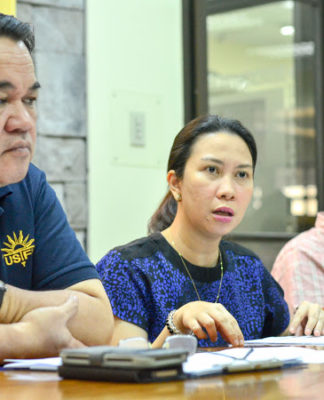
APOSTOLIC NUNCIO to the Philippines Archbishop Charles Brown urged Catholics to emulate the devotion to Christ that Blessed Justo Takayama Ukon exhibited despite hostility against his faith during the Mass for the feast of the Japanese Christian martyr on Feb. 3.
“Blessed Takayama is an example of holiness and resistance to injustice. He did not allow the unjust rules of persecution of Christians to discourage him. He remained faithful to his commitment to Jesus and his love for Our Lady,” Brown said during his homily at the Santisimo Rosario Parish Church.
Takayama was a Japanese Catholic samurai and feudal lord. In 1614, he was exiled to Manila after refusing to abandon his faith during the Christian persecution in his homeland.
Takayama was born into a samurai warrior family in 1552 at a time when Jesuit missionaries were in Japan to spread Christianity. He was a daimyo or feudal lord of Takatsuki Castle located in Osaka.
When Takayama turned 12 years old, his parents converted to Christianity and had him baptized with the name “Justo.”
In the early 1600s, during the reign of Tokugawa Ieyasu, Christian missionaries were expelled from Japan as persecution of Christians continue.
Refusing to renounce his faith, Takayama and his family were forced to flee to Manila in December 1614 together with 300 other Japanese Christians and foreign missionaries.
Brown emphasized that Takayama was an “effective” evangelizer because of his “great nobility and human qualities.”
“He represents an admirable example of fortitude in the faith and dedication in charity. This is the glory of Blessed Takayama. The fact that he was able to sacrifice his honors and homeland for the sake of Christ,” he said.
The nuncio said Takayama is a “good example of the importance and precious quality of refugees and migrants” today because he was a refugee himself.
Takayama devoted his time to prayer and evangelization of 3,000 non-Christian Japanese nationals in Paco, Manila during his brief stay in the Philippines.
He died in Intramuros on Feb. 3, 1615, 44 days after his exile.
The Archdiocese of Manila first proposed Takayama for sainthood in October 1630.
Historian Ernesto de Pedro, an alumnus of the UST Graduate School, was commissioned to study the cause since the petition for Takayama’s beatification was revived in 1986.
In 1989, de Pedro established the Lord Justus Takayama Professional Chair in Philippine-Japanese Studies in the University to ensure that the movement had roots.
Takayama was declared “Servant of God” on June 10, 1994.
On Jan. 21, 2016, Pope Francis approved the decree recognizing Takayma’s martyrdom.
Skipping the required second stage “Venerable,” Takayama was declared “Blessed” in Osaka, Japan on Feb. 7, 2017 by Cardinal Angelo Amato, then prefect of the Congregation for the Causes of Saints.
A month after his beatification, the University built a historical marker at the Thomas Aquinas Research Center to honor the Japanese “Samurai of Christ.” Ma. Alena O. Castillo and Allyssa Mae C. Cruz














